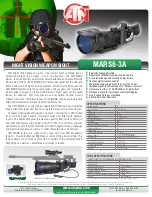
38 • Celestial Observing
Although overlooked by many amateur astronomers, solar observation is both
rewarding and fun. However, because the Sun is so bright, special precautions
must be taken when observing our star so as not to damage your eyes or your
telescope.
WARNING:
Never project an image of the Sun through the telescope. Because of
the folded optical design, tremendous heat build-up will result inside
the optical tube. This can damage the telescope and/or any accesso-
ries attached to the telescope.
For safe solar viewing, use a Celestron solar filter (#94162). This filter reduces
the intensity of the Sun’s light, making it safe to view. With this filter you can
see sunspots as they move across the solar disk and faculae, which are bright
patches seen near the Sun’s edge.
Be sure to cover the objective lens of
the finder or completely remove the finder when observing the Sun.
This will ensure that the finder itself is not damaged and that no one
looks through it inadvertently.
SOLAR OBSERVING HINTS
•
The best time to observe the Sun is in the early morning or late afternoon
when the air is cooler.
•
To locate the Sun without a finder, watch the shadow of the telescope tube
until it forms a circular shadow.
Observing the
Sun







































